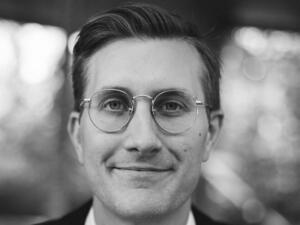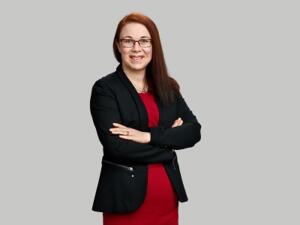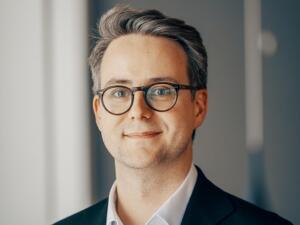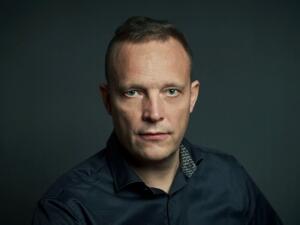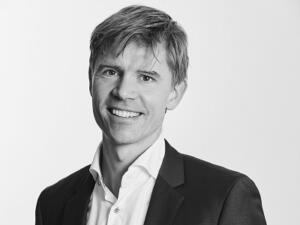Scandinavia’s UPC gambit: High hopes despite sluggish start
Despite hopes for a promising start, Scandinavian UPC divisions have seen sluggish development. While case numbers remain comparatively low, the market sees new players positioning themselves strategically for future European litigation.
25 June 2025 by Konstanze Richter
According to recent UPC statistics, all three divisions in Scandinavia — the local divisions Copenhagen and Helsinki, and the Nordic Baltic regional division with its seat in Stockholm — account for only 3.5% of the current UPC caseload.
The Nordic Baltic division currently has seven infringement cases. Statistics also show 13 counterclaims for revocation as well as one application for a preliminary injunction and one each for costs and preserving evidence. Compared to the same period last year, this represents only a minor increase — by one infringement action and two counterclaims for revocation. Two high-profile cases — Abbott vs Dexcom and Ocado vs Autostore — have since settled and Fapa Vital AG withdrew its preliminary injunction application against Valentis.
While part of the pan-European dispute in Edwards Lifesciences vs Meril Life Sciences remains pending at the Nordic Baltic division, most remaining cases have been filed by SMEs. These often hail from Scandinavia, such as Danish shoe protection manufacturer Imbox or Norwegian tool manufacturer Viking Arm.
In Helsinki, similarly little has happened in the past twelve months. At the end of May, the local division in the Finnish capital counted one infringement case and counterclaim for revocation in the dispute AIM Sport vs Supponor as well as four applications for cost decisions.
No part-time allowed
The Copenhagen local division also saw an increase in cases, albeit on a very low level. The number of infringement cases rose from one in the same period last year to three, according to the latest statistics. In addition, there were two counterclaims for revocation as well as one application for preliminary injunction and one for preserving evidence.
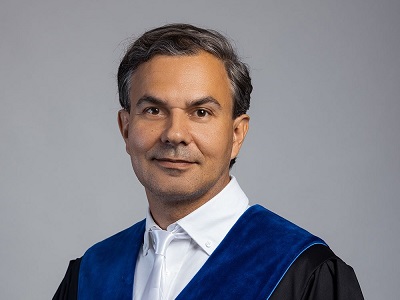
Peter Agergaard
Lawyers have complained to JUVE Patent about the long duration of proceedings at the local division in Copenhagen compared to the other UPC venues. This is likely due in part to a peculiarity of HR policy at Danish courts. While UPC judges from other countries have reduced their national positions to part-time in favour of working at the new court, this is not possible for Danish judge Peter Agergaard.
In Denmark, a judge cannot hold a part-time position before reaching the age of 65. The presiding judge of the local division Copenhagen therefore continues to work full-time as a judge at the city’s Maritime and Commercial Court. Everything he does for the UPC is therefore in addition to his full-time position.
Slight decline at Swedish courts
Meanwhile, patent proceedings at some national Scandinavian courts have seen a slight decline. Sweden’s Patent and Market Court, for example, registered ten new patent cases in 2024, a slight decrease compared with the twelve cases the previous year. At the same time, the Stockholm-based court informed JUVE Patent that it has issued 19 decisions — most of them in high-profile pharma cases.
Mannheimer Swartling remains particularly visible in patent litigation. The firm’s Stockholm-based IP team represents the patent holders in three of the largest pharmaceutical cases in Sweden. For example, Bayer relies on the team for its dispute over rivaroxaban, while Novartis has retained it for the disputes over apixaban and fingolimod.
Swedish outfit Setterwalls is similarly active but on the side of generics manufacturers. While Scandinavian full-service firm Schjødt advised Bayer in the nexavar dispute, Mylan/Viatris relied on Setterwalls in all cases. At the same time, Setterwalls also acted for Zentiva in the fingolimod case, while Gulliksson represented Teva. Gulliksson advised the generics manufacturer as well as Glenmark in the Xarelto dispute, among others. In the latter dispute against Bayer, Stada relied on a team of IP boutiques Malmstedt and Lind Edlund Kenamets IP.
High-profile cases
Gulliksson is also representing Edwards Lifesciences at Sweden’s Patent and Market Court and — together with Powell Gilbert — at the UPC’s Nordic Baltic division in the heart-valve dispute with Meril Life Sciences. Stockholm-based Sandart, specialised in IP dispute resolution, represents the latter in both cases. The two law firms also face each other in the Tecfidera dispute, with Sandart acting for Biogen and Gulliksson for Glenmark.
Sandart and Gulliksson are among the few firms in Sweden that are currently active in high-profile disputes in other tech fields. For example, Sandart is representing OnePlus and Reflection Investment in an SEP dispute with Nokia. The latter relies on Roschier.
Meanwhile, Gulliksson advises BSH in the dispute with Electrolux, which is now continuing nationally at the second instance following the CJEU judgment. The Swedish boutique Westerberg represents Electrolux.
Vinge, another law firm with a well-known presence in patent litigation in Sweden, is currently seen primarily for Takeda in a case against Sandoz regarding amphetamine compounds.
Bigger decline in Helsinki
In Finland, the decrease was more pronounced. The Market Court in Helsinki received 13 new patent litigation cases and preliminary injunctions in 2024, compared with 20 new patent suits the year before. The court counted ten decisions last year.
As in Sweden, there is a strong concentration of cases among a handful of law firms. Roschier and Finnish full-service firm Borenius cross swords most frequently — the former usually on the side of the patent holder. Examples include the dispute between Nokia and Oppo, Novartis vs Viatris/Mylan and Teva/Ratiopharm, as well as the proceedings concerning Xarelto, in which Borenius represents Glenmark as well as Teva/Ratiopharm.
“Clients eye the UPC as a possible alternative”
Although the decline in national cases echoes the developments at other national European courts, for example France and Germany, lawyers told JUVE Patent that fluctuating cases is typical for Finland.
That said, the duration of proceedings for larger cases can be up to three years, according to lawyers. This is one reason why the UPC is becoming increasingly attractive for patent disputes in Scandinavia. “Our clients eye the UPC as a possible alternative,” says Suvi Julin, partner at Finnish IP firm Berggren.
Stable numbers in Copenhagen
According to estimates by Danish lawyers, the Maritime and Commercial High Court in Copenhagen typically sees around 25 new patent cases per year. The court database has published just under ten judgments in patent disputes for 2024, as in the previous year.
Like in other Scandinavian countries, these included important decisions in pan-European pharma disputes, for example concerning Bayer’s blockbuster Xarelto. While Danish full-service firm Plesner represents Bayer, on the opposing side the IP teams of Copenhagen-based outfits Horten, Loeven, and Bugge Valentin represented Glenmark, Stada, and Sandoz, respectively.
Bugge Valentin is also advising Sandoz in the Tecfidera proceedings against Biogen, in which patent litigators from full-service Danish firm Bech-Bruun are representing the patent holder Biogen. Bugge Valentin is also advising Stada in a patent dispute with Takeda concerning the ADHD drug Elvanse. Takeda is relying on Plesner here.
In addition, Plesner and Bech-Bruun are facing off in a pharmaceutical dispute between Janssen and Samsung Bioepis over Stelara.
Scandinavia shifting
Overall, it is seemingly ‘business as usual’ when it comes to prominent patent disputes and their representatives at national level. However, some initial high-profile moves and strategic alignments within law firms indicate that the Scandinavian market is indeed beginning to shift.
“It’s a bold move you don’t often see in Scandinavia”
Wendela Hårdemark’s move from Westerberg to Bird & Bird caused a stir in Sweden this spring, for example. Bird & Bird is one of the few international firms to have an IP team in the Scandinavian market — first in Helsinki, now in Stockholm. This further addition underlines the firm’s commitment to the Scandinavian market.
One move that set tongues wagging was that of Emil Brengesjö. Previously a counsel at Mannheimer Swartling, he left to launch his own boutique. “It’s a bold move you don’t often see in Scandinavia, especially on associate level,” commented a lawyer from Stockholm.
Potential cooperation
Brengesjö worked at Mannheimer Swartling for twelve years, focusing on patent litigation. In August he will launch IP and dispute resolution boutique Brengesjö Metz with Ludwig Metz from Vinge. One of his aims is to position himself as a potential UPC cooperation partner for larger teams that wish to draw on his experience with Swedish judges and his expertise in Scandinavian law aspects within the UPC.
“You often need different perspectives from various countries for the proceedings. Because of this, I believe we will see more international teams at the UPC in the future, which may also be made up of different law firms,” Brengesjö told JUVE Patent.
“You need different perspectives from various countries”
Lawyers also observed the development at the Danish law firm Bech-Bruun with interest. After life sciences expert Martin Gantzhorn moved to Danish competitor Gorrissen Federspiel in summer 2024, Bech-Bruun re-strengthened the ranks of its life sciences team in early June with Louise Bertelsen Forman from Loeven.
With the addition of Gantzhorn, Gorrissen Federspiel has successfully increased its presence in the pharma and life sciences patent space. Up to now, the team has been recognised predominantly for its advice and litigation concerning electronics and mechanics. For example, the firm represented the Taiwan-based machine tool manufacturer Andersen Group before the Maritime and Commercial Court against the Danish company Needit regarding electronic parking discs. Plesner represented Needit in this case.
Few firms straddle Scandinavia
Traditionally, there are only a few international law firms in Scandinavia or Scandinavian outfits with offices in multiple countries. These include Roschier, which is based in Helsinki and Stockholm, and Bird & Bird, which is now establishing an IP team in Stockholm in addition to its patent practice in Helsinki.
CMS, which has offices in Stockholm and Gothenburg as well as in Norway, also has IP teams in these countries but these do not yet have a strong profile in patent litigation. Furthermore, some UK firms such as EIP and Potter Clarkson have offices in Sweden.
“I don’t see why a mixed approach cannot be successful in the Nordic market”
The originally Norwegian law firm Schjødt is also one of the few examples of cross-border set-ups in the Scandinavian market. The Swedish team was added through the merger of Schjødt with Hamilton Advokatbyrå and the firm opened its Copenhagen office in 2022. It also has an office in London. Schjødt launched one of the few UPC proceedings at the Nordic Baltic division, for Norwegian client Viking Arm against Stanley Black & Decker. The parties recently settled.
IP firm Zacco has offices in Sweden, Norway, Denmark, Germany, the UK, and India. In addition to its three offices in Denmark, Norway and Sweden, AWA also has offices in Brussels, Switzerland and China. Both Zacco and AWA unite patent attorneys and litigators under one roof. They offer a broad range of services in IP, including litigation, but do not enjoy the same renown for patent litigation as the IP teams of the traditional law firms.
Mixed setups rare
Berggren is one of few firms in Finland involved in prosecution as well as litigation. Originally a pure patent attorney firm, Berggren is very active in EPO oppositions. For a few years now the firm has taken on lawyers to boost its litigation profile in view of the UPC. This resulted in the firm’s representation of Vahterus in a case against EuroHeat at the Copenhagen local division.
Suvi Julin for example is dual qualified as lawyer and patent attorney. Her colleague Michael Nielsen — a British native who joined the firm in 2022 — is very familiar with the concept of mixed firms as he used to work for Carpmaels & Ransford. “I don’t see why the mixed approach of having both patent attorneys and attorneys-at-law in the same firm, as in the UK or Germany, cannot be successful in the Nordic market as well,” Nielsen says.
- Emil Brengesjö
- Suvi Julin
- Michael Nielsen
Danish outfit Plesner was one of the first law firms to hire a patent attorney when it took on Kim Wagner in late 2023. Previously a partner at patent attorney firm Plougmann Vingtoft, Wagner brings experience in life sciences.
Plesner partner and litigator Mikkel Vittrup represents pharma giants such as Bayer and Janssen in national litigation over blockbuster patents such as Xarelto.
Alternative strategy
Other firms combine patent attorney work with litigation in sister firms where the fee earners collaborate closely, such as the Swedish law firm Gulliksson and the patent attorney firm Ström & Gulliksson.
The Danish outfits Patrade and Patrade Legal are similarly organised. Lawyer Mikkel Kleis from the former and four patent attorneys from the latter are UPC representatives. Kleis litigates in several UPC proceedings, including Imbox vs Footbridge, Hybridgenerator vs Infotech/HGS, and SwipBox vs Qlocx.
Such litigation often arises from the patent attorneys’ contacts in prosecution work. Earlier this year, the team strenghthened its litigation capacities in the Aalborg office by taking on lawyer Jonas Rubien from HjulmandKaptain.
Patent attorneys making inroads
The fact that, as UPC representatives, patent attorneys can gain a strong toehold in patent litigation is attracting new players, such as Aera. Founded in Copenhagen in 2018 by patent attorneys from Zacco and Plougmann Vingtoft, the IP firm now also has offices in Sweden and Germany. In February Aera recruited its first patent attorney in Norway.
- Nicka Kirstejn
- Mikkel Kleis
“From the get-go we had the UPC in view, setting up the firm as cross-border as possible,” says managing partner Nicka Kirstejn. “The UPC will be a game changer, at the moment we are in a transition period. Now, but even more so in the future, our competition will not be other Scandinavian firms, but outfits from Germany, France and UK.”
Rising interest from Norway
Even though Norway is not part of the UPC, the new court also has an impact on the Norwegian market. Norwegian company Viking Arm, for example, is already using the UPC and some law firms are also incorporating the court into their strategies.
Although Norway, like the other Scandinavian markets, is not a heavyweight in patent litigation, lawyers estimate the number of newly filed patent lawsuits at between five and ten per year. This includes infringement and nullity claims as well as lawsuits against the refusal to grant a patent. The Oslo District Court is the first-instance court for patent infringement claims.
Similarly to its Scandinavian neighbours, pharmaceuticals are one of the country’s most important sectors for patent litigation. In addition, there are many IP disputes concerning patents from the oil and gas industries, as well as fishing — industries that are strongly represented in Norway. For this reason, law firms such as Schjødt and Thommessen have offices in the coastal cities of Stavanger and Bergen as well as London. Relations with the British market are very close in these industries.
Furthermore, Bahr, Wikborg Rein and Wiersholm, based in Oslo and Trondheim, are full-service firms with established IP practices that are also active in patent disputes. The small IP team at Kvale, which in the past has advised Siemens and Mylan/Viatris on patent matters, for example, is also one of the most visible outfits in the Norwegian patent market.
Gjessing Reiners is the only IP boutique in Norway. The firm recently brought two IP litigators from Wikborg Rein into the team. They bring patent experience in sectors such as oil and gas, renewable energies, aquaculture and life sciences.
Hopes unfulfilled
Overall, the Scandinavian UPC divisions and therefore the law firms have developed less dynamically than many Scandinavian lawyers had hoped. So far, law firms have tended to work for national SMEs at the local chambers, for example for Finnish companies such as Vahterus, Supponor and Vilpe, Danish clients like Infotech, Imbox and Swipbox, or Swedish SMEs such as Aarke and Qlocx.
“UPC litigation will replace most national litigation”
At the UPC, international corporations continue to rely on established law firms, mostly from Germany and some from the UK. Many of these have been much more active than the local Scandinavian firms in promoting the UPC and their competence to plead before the new court.
“I don’t understand this ‘wait and see’-approach of nordic firms, especially in view of the fact that UPC litigation will replace most national litigation in the Nordics,” says Michael Nielsen of Berggren. He thinks there have rarely been such great opportunities for change in the European market as there have been since the launch of UPC. “After all, at the outset nobody — neither lawyers nor patent attorneys — had any experience at the UPC. Everybody was starting from zero.”
Too much civil law
Some lawyers told JUVE Patent they would have preferred for the UPC to have established just one local division for all the Scandinavian and Baltic countries.
Moreover, they complain that UPC case law is too heavily characterised by civil law due to the strong German influence. They claim that the common law aspects of the Rules of Procedure take a back seat.
However, the latest developments are likely just the start, even if things are progressing slowly. “We will see a consolidation in the market in the next few years,” says Nicka Kirstejn of Aera. After all, all new things are tough in the beginning. Mikkel Kleis of Patrade Legal puts it in a nutshell: “A few cases at the UPC does not disrupt the market.”
